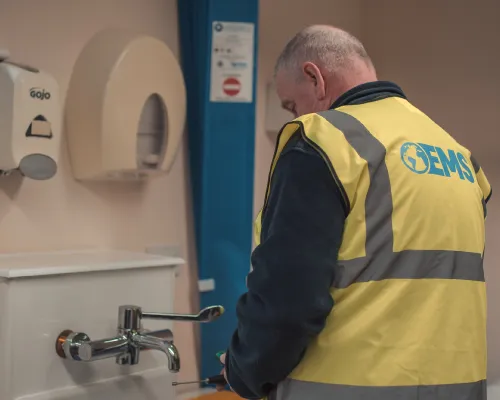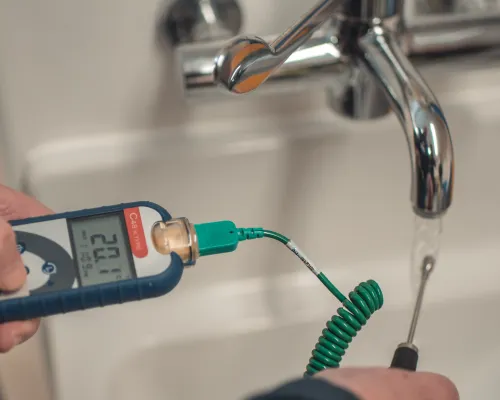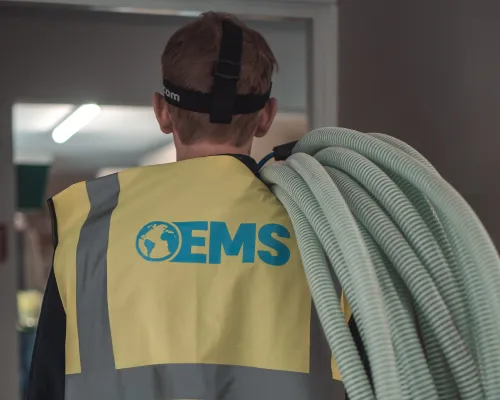
No items found.
EMS Water recently completed a Legionella risk assessment on behalf of a charity organisation in North Wales. The charity occupy part of the building but retain landlord responsibility for their tenants who occupy other floors of the building.
The building and water services within this listed building had been refurbished in 2012 and the underlying belief of the organisation was that there was no need for management of their water systems in relation to Legionella due to it being modern. This is a common misconception; the age of a water system has no legal baring on what organisations or individuals in control of the premises must do to ensure safe management.
The first area of the water system observed was the incoming town mains supply, this was seen to feed two boosted cold-water storage tanks which in turn served all of the cold water around the building. This included drinking water. Although not a legionella risk, water systems set up in this way are required to be managed to retain the wholesomeness of the water within the system. If drinking water is to be served from a tank it must be designed and managed so that it will maintain the water quality category set out under the water regulations.
Although the tanks were clean and suitably constructed for this purpose the owner had not been informed of the requirement for such tanks supplying drinking water in a building. This is with the exception of a domestic dwelling in accordance with BS8558:2015.
Next on the agenda was the centralised hot water system. This was a very efficient rinnai gas fired unvented water heater with recirculation. The system was able to deliver hot water throughout all floors within a quick time frame while retaining minimal water. When observations were taken of the outlets it served we noticed a large number of thermostatic mixing valves were installed into the system. As this building was serving tenants and people not within the control of the client this was a wise choice in preventing harm or injury by scald. However, the majority of thermostatic mixing valves (TMV’s for short) were seen to be providing hot water above the recommended outlet temperature, thus still presenting a risk of scald to users. It was highlighted to the client that this device is a mechanical safety device and should be safe for use IF maintained in a safe condition and inspected to ensure it is correctly installed and does not subsequently deteriorate. Within a short time frame,the client had addressed this issue by adjusting the valves to a more suitable temperature. This remedial solution was cost effective it was something they were able to do themselves through one of their competent staff.
Overall, the system itself was determined to be in a good clean condition and therefore posed a low risk in relation to Legionella due to the storage and distribution of both hot and cold water within the premises and the activities that this water is used for. However, the client was able to ensure that their overall compliance with British standards, the Approved Code of Practice L8 and regulations such as COSHH, the Management of Health and Safety Regulations 1999 and PUWER1998 was ensured.





